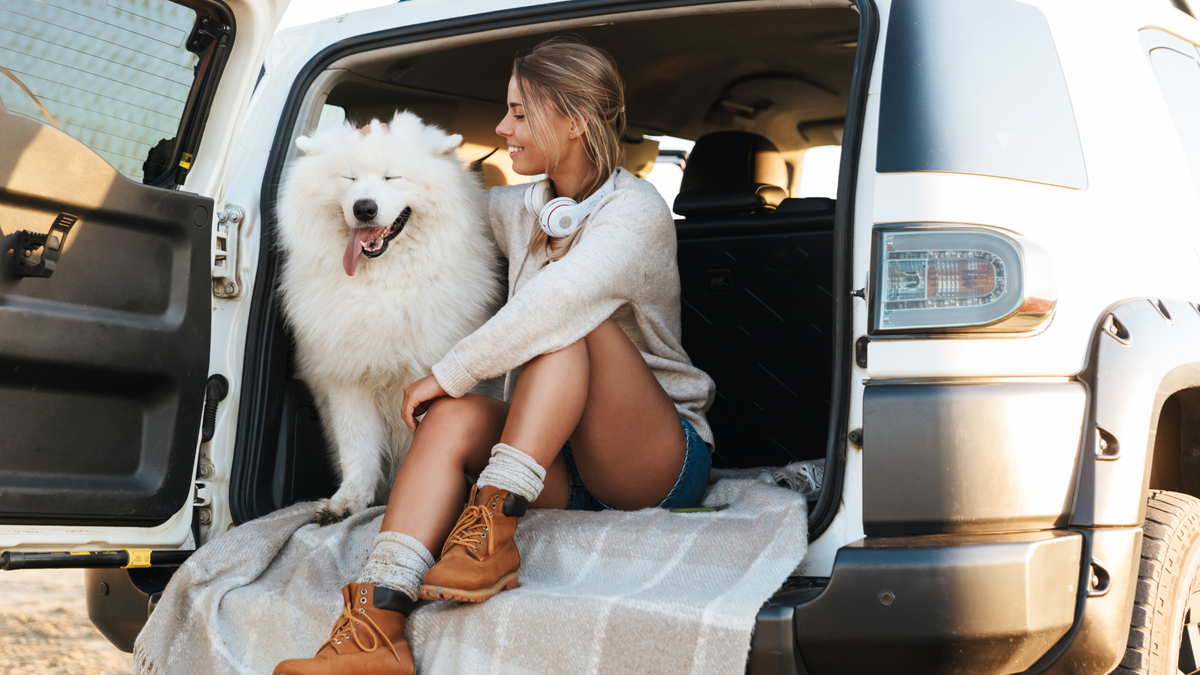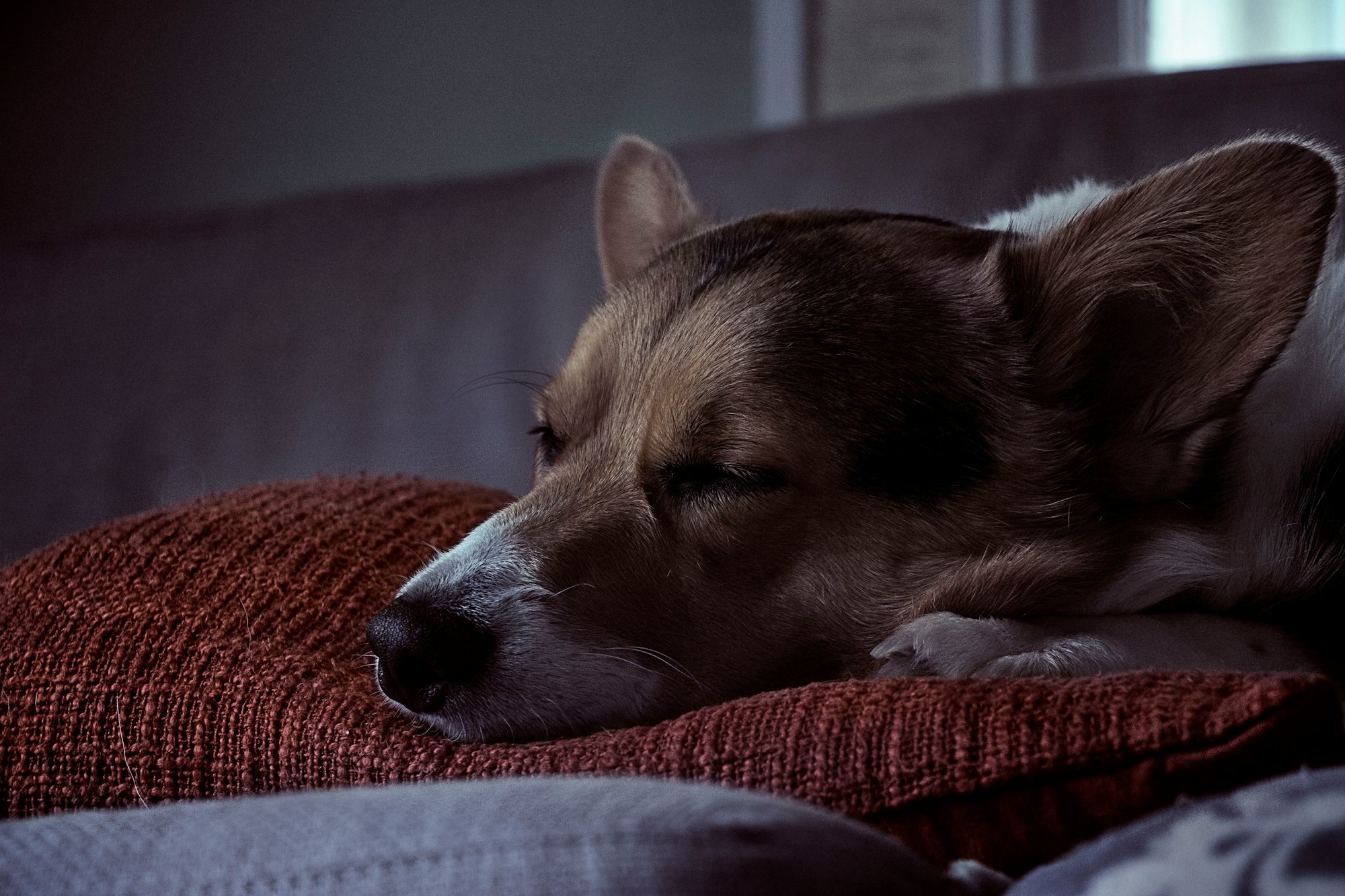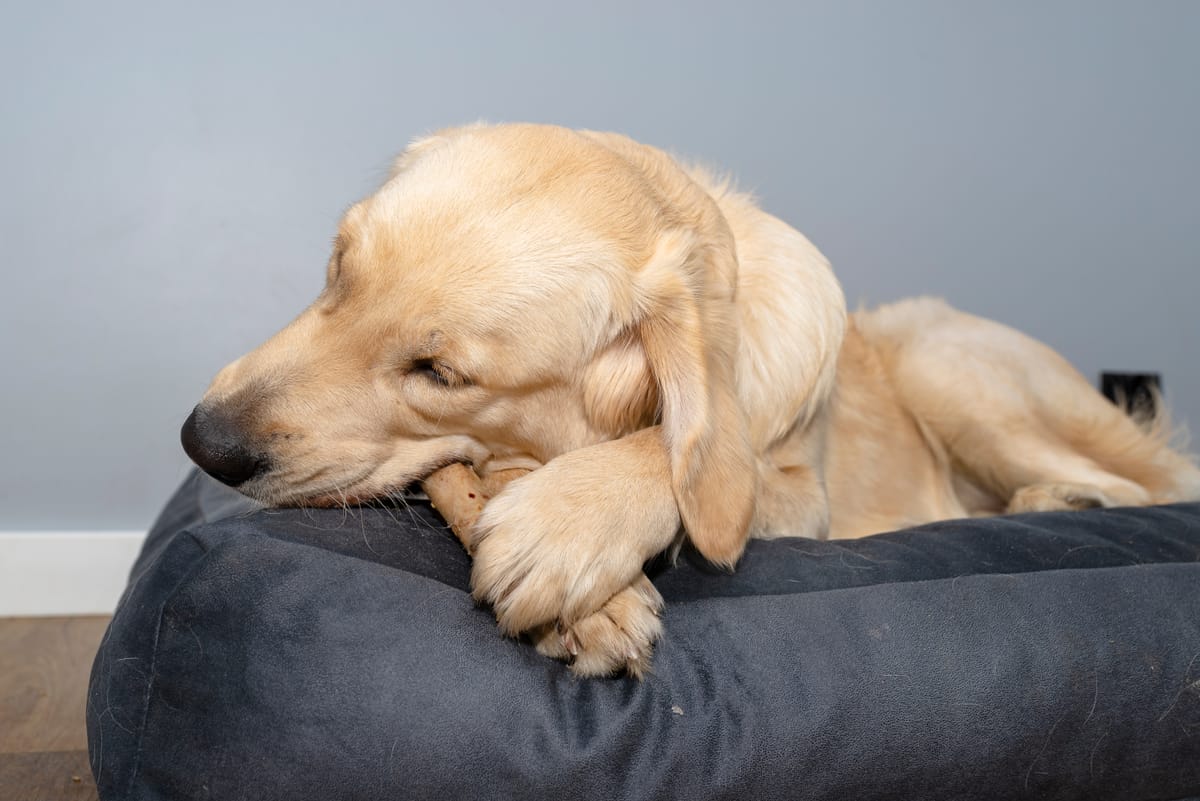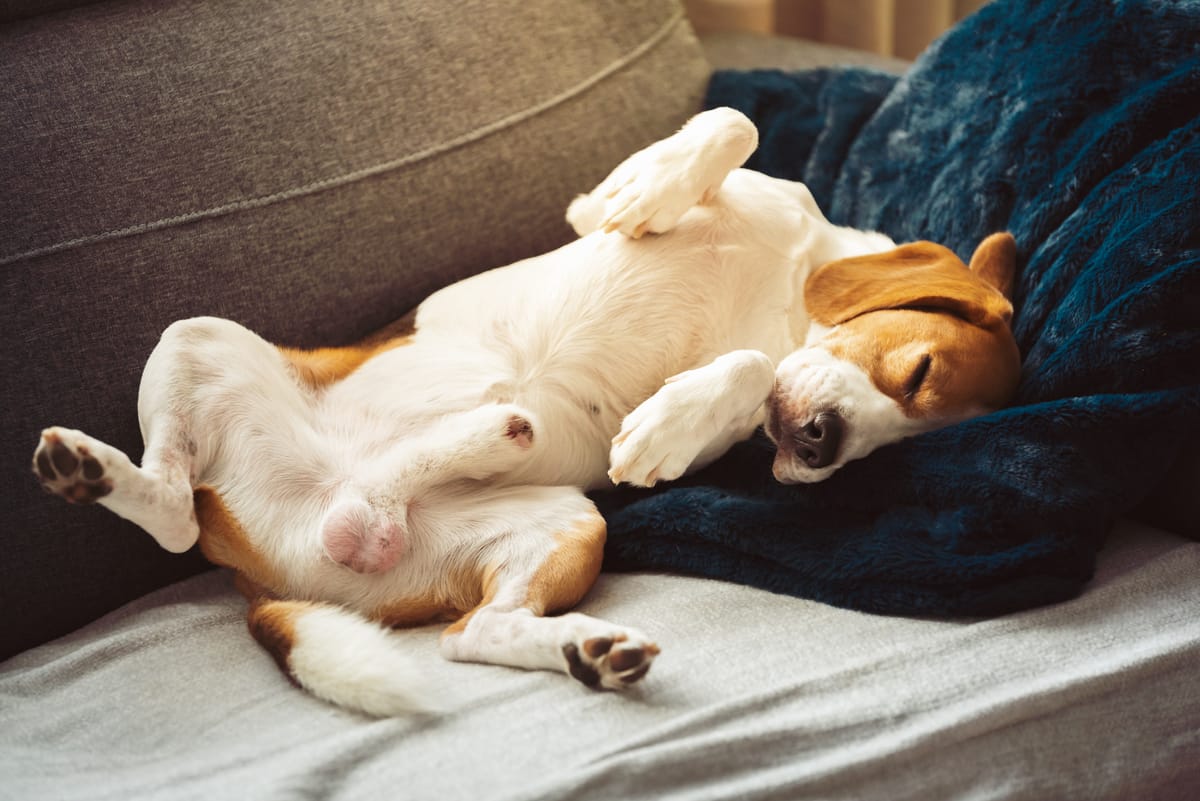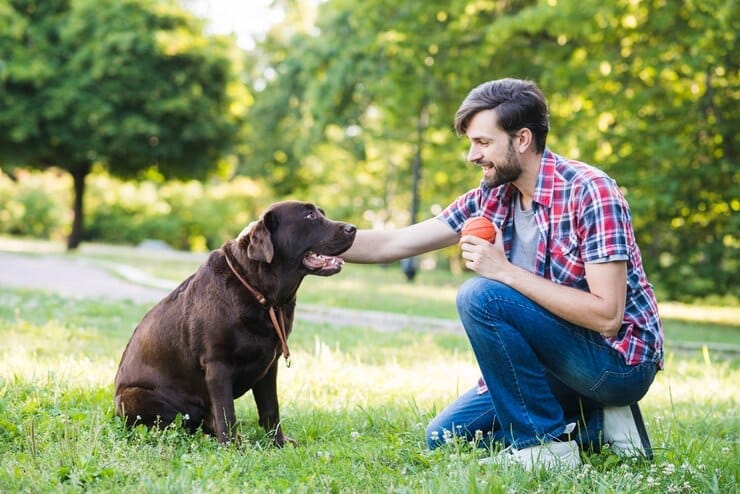Understanding your dog's sleeping positions can provide valuable insights into their overall comfort, well-being, and behavior. Just like humans, dogs have various sleeping positions that can reveal a lot about their physical and emotional state. By observing their sleeping habits, you can gain a deeper understanding of your furry friend. Here are the sleeping positions commonly adopted by dogs, along with their significance and what they indicate.
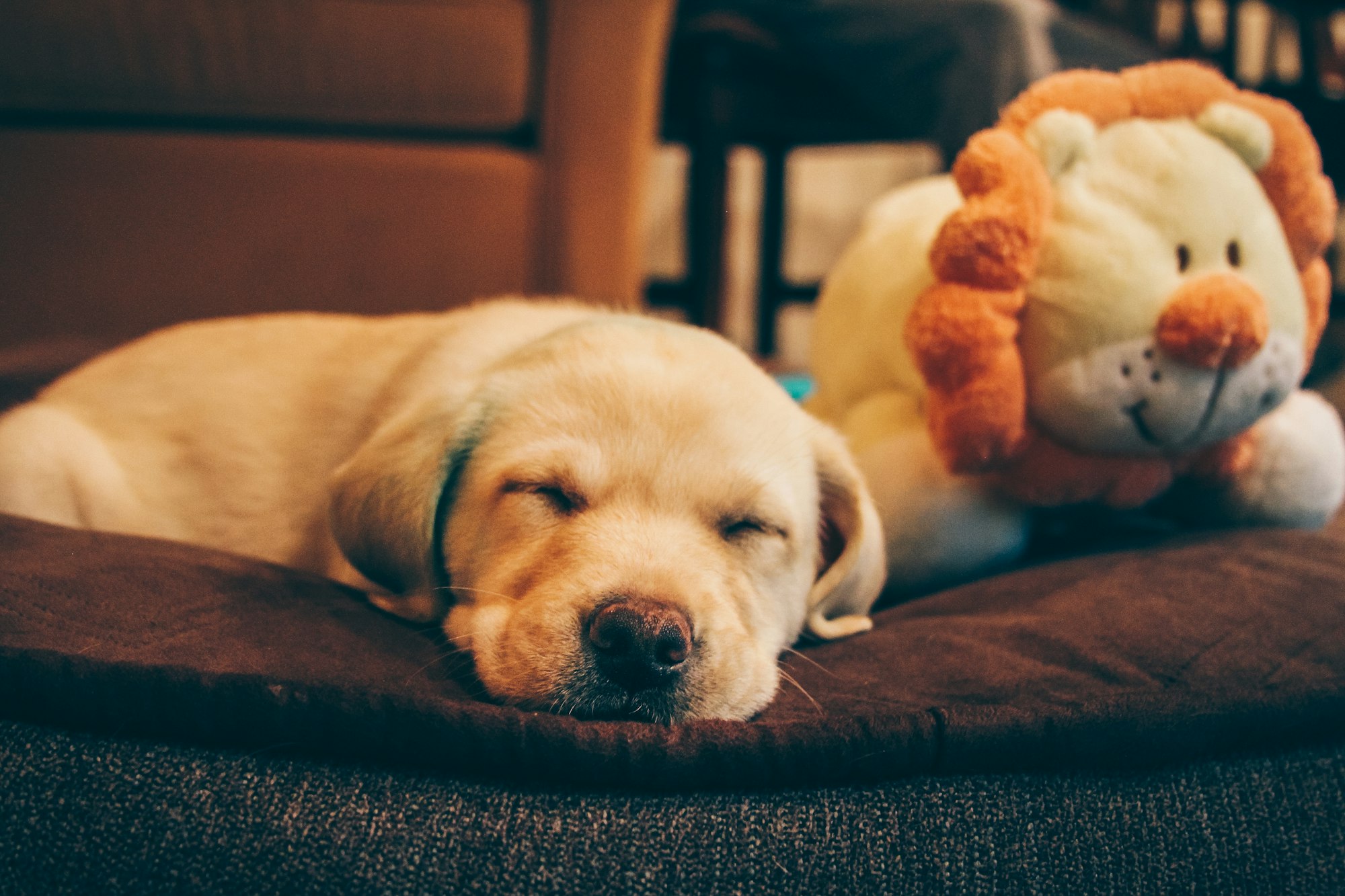
1. The Curl: This is when your dog sleeps in a curled-up position, with their tail wrapped around their body. It is a common sleeping position for dogs and signifies that they are seeking comfort and security.
2. The Side Sleeper: Dogs that sleep on their side with their legs stretched out are revealing a level of vulnerability. This position indicates that they feel safe, relaxed, and are in a deep sleep state.
3. The Belly Flopper: When your dog lies flat on their belly with their legs splayed out, it indicates that they are trying to cool down. This position allows for maximum exposure to the air, helping to regulate their body temperature.
4. The Superman: Some dogs may choose to lie on their stomach with their legs stretched out behind them, resembling the flying position of Superman. This position is often observed in puppies and active breeds. It suggests that they are ready to spring into action at any moment.
5. The Spoon: This position is typically seen when dogs sleep next to their owners or other pets. They will curve their body to match the shape of the one they are snuggling with, seeking warmth and companionship.
The significance of dog sleeping positions lies in their behavior, comfort, and even potential signs of pain or discomfort. By understanding their preferred sleeping positions, you can ensure that your furry companion is content and well-rested.
Different dogs may have different sleeping habits based on their age, breed, and energy levels. Puppies, for example, often sleep more and move around frequently during their sleep. Senior dogs may prefer softer beds and shorter periods of sleep. Active breeds may need more space and prefer to sleep in areas they consider their territory.
To create a suitable sleeping environment for your dog, consider factors such as choosing the right bed that provides proper support, providing a quiet space away from distractions, and maintaining a comfortable temperature.
By paying attention to your dog's sleeping positions and ensuring a conducive sleep environment, you can contribute to their overall well-being and happiness.
What Your Dog's Sleeping Position Reveals
Curious about what your dog's sleeping position reveals? From the adorable curl-up to the belly flopper, each sleeping position reflects your furry friend's personality and needs. In this section, we'll uncover the secrets behind your dog's slumber styles. Get ready to decode the meaning behind the curl, the side sleeper, the belly flopper, the superman, and the affectionate spooner. Prepare to gain insight into your canine companion like never before!
The Curl
The curl is a common sleeping position that dogs often adopt. Here are some key points to understand about this position:
- The curl is when a dog sleeps with its body tightly curled up, with its tail wrapped around its nose or face.
- This position is often chosen by dogs because it helps them conserve body heat and feel safe and secure.
- The curl is commonly seen in smaller dog breeds or dogs that have a more anxious or timid temperament.
- When a dog curls up, it helps them protect their vital organs and maintain warmth, which is especially important in colder environments.
- Dogs that sleep in the curl position may also be trying to comfort themselves and feel more relaxed and at ease.

If your dog sleeps in the curl position, it's essential to provide them with a suitable sleeping environment:
- Ensure they have a soft and comfortable bed that allows them to curl up and stretch out as needed.
- Place their bed in a quiet area of your home where they feel safe and can rest without disturbance.
- Maintain a proper temperature in the room they sleep in, ensuring it's neither too hot nor too cold.
Understanding your dog's sleeping position, such as the curl, can help you better cater to their comfort and well-being during rest. By providing them with a suitable sleeping environment, you can ensure they have a peaceful and rejuvenating sleep.
The Side Sleeper
The Side Sleeper position is one of the common sleeping positions observed in dogs. This position involves the dog lying on its side with its legs extended or slightly curled. It is a relaxed and comfortable position that allows The Side Sleeper to rest and sleep peacefully.
Dogs who sleep on their side often feel secure and safe in their environment. It is a natural position for dogs to sleep in, as it allows them to easily stretch out their bodies and limbs. The Side Sleeper position also helps dogs regulate their body temperature more efficiently. When a dog sleeps on its side, more fur is exposed to the air, which helps dissipate heat and keep The Side Sleeper cool.
In addition, dogs who sleep on their side may be indicating that they are in a state of relaxation and trust in their surroundings. Some dogs may prefer to sleep on their side due to joint or muscle discomfort, as this position alleviates pressure on certain areas of the body. Observing a dog in The Side Sleeper position can provide insights into their comfort, relaxation, and overall well-being.
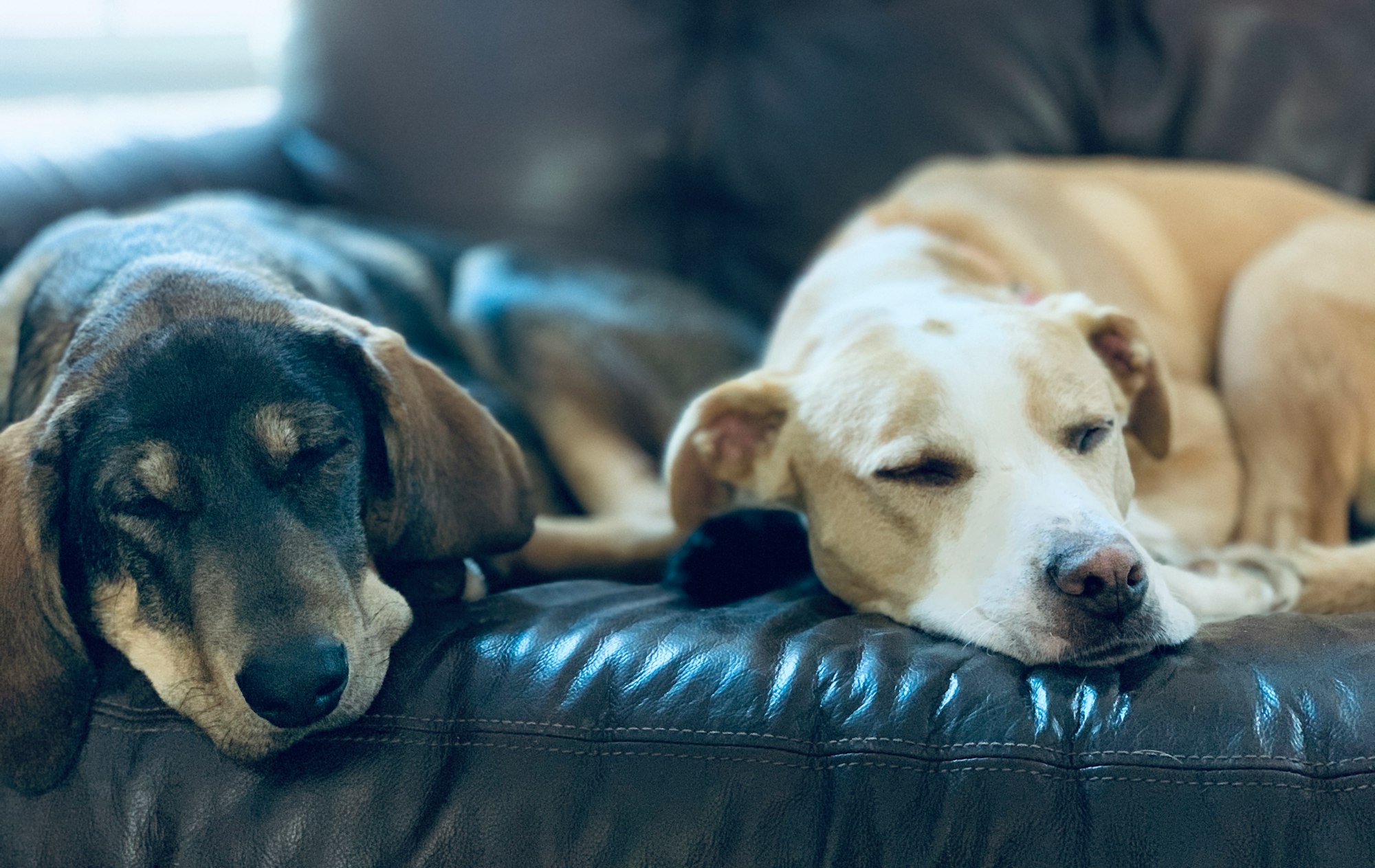
The Belly Flopper
The belly flopper is a common sleeping position that many dogs adopt. In this position, The Belly Flopper, the dog lies flat on their belly with their legs stretched out behind them. This Belly Flopper position is often seen in dogs who feel comfortable and secure in their environment. The Belly Flopper position has several benefits for dogs. It allows them to cool down effectively as their belly is in direct contact with the cooler surface. This is especially beneficial for dogs who tend to overheat easily.
The Belly Flopper position allows dogs to fully stretch their muscles and relax, promoting better circulation and joint health. If your dog frequently sleeps in the Belly Flopper position, it is a good indicator that they are feeling safe and at ease in their sleeping environment. It is important to note that some dogs may adopt this position if they are experiencing discomfort or pain in their back or joints. If you notice any signs of discomfort, such as limping or reluctance to move, it is advisable to consult a veterinarian to rule out any underlying issues.
To create a suitable sleeping environment for your dog in the Belly Flopper position, provide a comfortable and supportive bed that allows them to fully stretch out. Ensure that the temperature in the room is cool enough to prevent overheating.
Providing a quiet space free from disturbances will help your dog feel secure and promote better sleep. By understanding the significance of the Belly Flopper position and creating a suitable sleeping environment, you can ensure that your dog gets a good night's rest and wakes up feeling refreshed and rejuvenated.
The Superman
sleeping position is when a dog lies flat on its stomach with its front legs stretched out in front of its body and its hind legs stretched out behind. This position is often seen in dogs who are feeling relaxed and secure.
The Superman position allows dogs to cool down and regulate their body temperature effectively. By spreading out their belly on a cool surface, they can dissipate heat and stay comfortable. Dogs who prefer the Superman position are often seen sleeping on hard, cool surfaces like tile or hardwood floors.
This sleeping position can also indicate that a dog is feeling safe and secure in its environment. By stretching out its body, the dog is signaling that it is not in a vulnerable position and is ready to spring into action if needed.
It's important to provide a suitable sleeping environment for dogs who prefer the Superman position. Ensure they have access to cool surfaces, especially during hot weather. Providing a comfortable dog bed with good ventilation can also enhance their sleeping experience.
The Superman sleeping position in dogs is a sign of relaxation, temperature regulation, and a sense of security. Understanding and accommodating their sleeping preferences can contribute to their overall well-being and comfort.

The Spoon
When observing your dog's sleeping position, "The Spoon" is one common position that you may notice. In this position, your dog will curl up next to you or another object, resembling the shape of a spoon. The Spoon sleeping position provides several benefits for your dog's comfort and well-being.
| Benefit | Description |
| Comfort | The Spoon position allows your dog to feel secure and cozy, as it mimics the warmth and protection they experienced when snuggling with their mother and littermates as a puppy. |
| Temperature Regulation | This position helps your dog maintain a comfortable body temperature as their curled position conserves heat and keeps them warm. It is especially helpful in colder environments. |
| Pain or Discomfort Indicators | If your dog frequently adopts the Spoon position, it may indicate that they are experiencing pain or discomfort. This position can help alleviate pressure on certain body parts, relieving any discomfort they may be feeling. |
To ensure your dog's comfort while sleeping in the Spoon position, provide them with a suitable sleeping environment. Choose a bed that is soft and supportive, allowing for proper rest and relaxation. Create a quiet space free from excessive noise or distractions to help your dog sleep peacefully. Maintain a proper temperature in the sleeping area to ensure your dog remains comfortable throughout the night.
By understanding your dog's sleeping positions, such as the Spoon position, you can gain insights into their comfort, well-being, and potential discomfort. Providing a suitable sleeping environment and paying attention to any changes in their sleeping habits can help enhance their overall quality of sleep and overall health.
Significance of Dog Sleeping Positions
Discover the fascinating world of dog sleeping positions and their significance. Unravel the secrets behind your furry friend's slumber as we dive into various sub-sections. From comfort and security to temperature regulation and even pain or discomfort indicators, we'll explore how your dog's preferred sleeping positions can reveal valuable insights about their well-being. So, let's delve into this intriguing topic and gain a deeper understanding of our canine companions' sleeping habits.
Common Sleeping Habits of Dogs
Discover the intriguing world of how our furry friends catch their Zs! In this section, we'll unveil the common sleeping habits of dogs, from playful puppies and wise senior dogs to the energized slumber of active breeds. Unleash your curiosity as we delve into the fascinating realm of doggy dreams.
Puppies
- Puppies are known to have different sleeping positions compared to adult dogs.
- One common sleeping position for puppies is the "puppy pile." This is when puppies cuddle up close to each other in a heap, seeking comfort and warmth.
- Puppies may also sleep on their backs with all four paws in the air. This position indicates that they feel secure and relaxed in their environment.
- Another common sleeping position for puppies is the "superman." In this position, puppies sleep on their bellies with their front legs stretched out in front of them and their hind legs stretched out behind them.
Puppies have a natural instinct to seek warmth and security while they sleep. They often sleep in groups to stay close to their littermates, providing comfort and a sense of safety. As they grow older, their sleeping positions may change, but during their early stages of development, these positions are common among puppies.
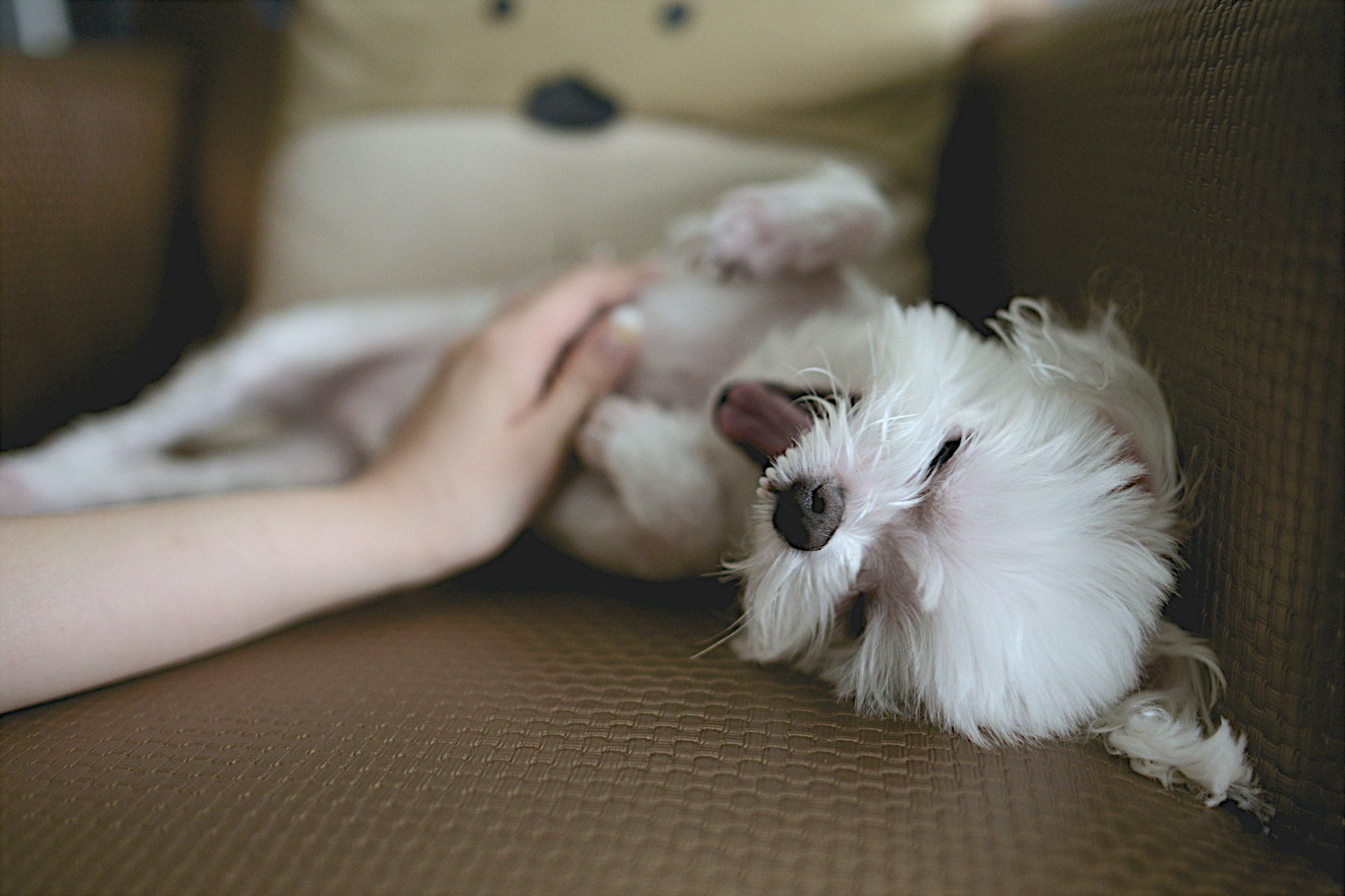
Senior Dogs
Senior dogs have unique sleeping habits and requirements compared to puppies or active breeds. Here are some important considerations when it comes to senior dogs and their sleep:
1. Increased need for comfort and support: As dogs age, they may develop joint issues or arthritis, making it more important to provide them with a comfortable and supportive bed. Look for beds that offer orthopedic support or memory foam to alleviate pressure on their joints.
2. Longer sleep duration: Senior dogs tend to sleep more than younger dogs. On average, they may sleep for 14-16 hours a day. Providing them with a quiet and cozy space where they can rest undisturbed is essential.
3. Temperature regulation: Older dogs may struggle more with temperature regulation, so it's important to keep their sleeping environment at a comfortable temperature. Make sure they have access to a warm spot in colder weather and provide them with a cooler area or a fan during hot summer months.
4. Frequent bathroom breaks: Senior dogs may have decreased bladder control, leading to more frequent bathroom breaks. Make sure they have easy access to a designated bathroom area to avoid accidents during the night.
5. Regular exercise: While senior dogs may have lower energy levels, regular exercise is still important for their overall well-being. Incorporate gentle walks or low-impact activities into their daily routine to help them maintain muscle tone and joint flexibility.
Fact: Did you know that senior dogs often experience changes in their sleep patterns, including more frequent waking during the night? This can be due to a variety of reasons, including discomfort or medical conditions. Providing a comfortable sleeping environment can help them get the rest they need.
Active Breeds
When discussing active breeds of dogs, their sleeping habits differ significantly from other dogs. Here are a few important factors to consider regarding active breeds and their sleep patterns:
- Restlessness: Active breeds, such as Border collies, Australian Shepherds, and Labrador retrievers, have an abundance of energy. As a result, it can be challenging for them to settle down and sleep peacefully. Before finding a comfortable position, they often toss and turn.
- Movement: Throughout the night, these breeds may frequently change their sleeping position. They are more likely to shift from side to side or from their back to their stomach.
- Stretching: While sleeping, active breeds often stretch their legs and bodies. This helps them alleviate any muscle tension and prepare for physical activity.
- Dreaming: Due to their active lifestyles, these dogs may have more vibrant dreams. You may notice them twitching, wagging their tails, or even barking while asleep.
- Waking up early: Active breeds typically rise early in the morning, eager to start their day. With an abundance of energy, they are ready to engage in physical activities.
Fun fact: Active breeds such as border collies, Australian shepherds, and Labrador retrievers are renowned for their athleticism and require plenty of exercise to maintain their happiness and overall well-being.
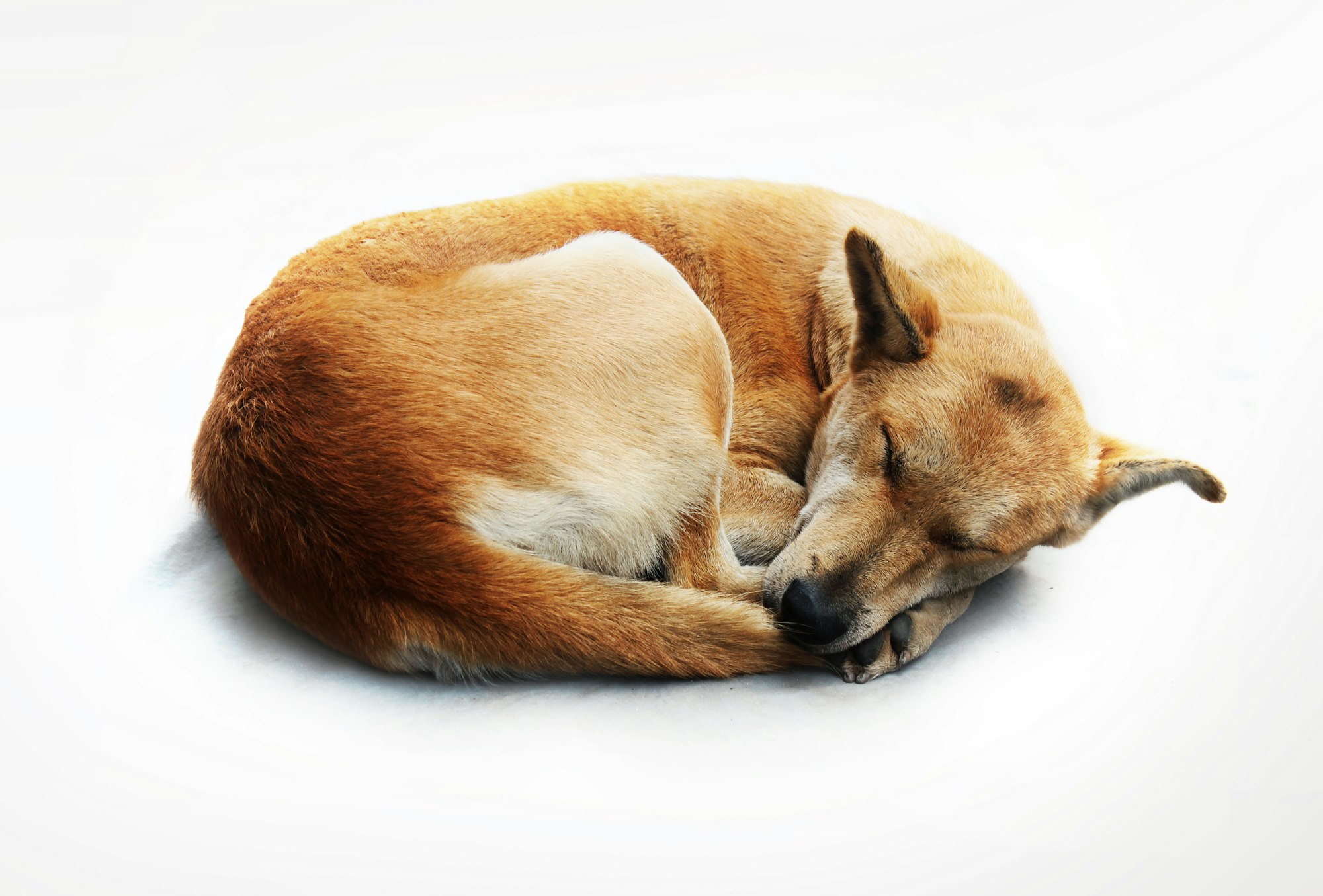
Creating a Suitable Sleeping Environment for Your Dog
Creating a comfortable sleeping environment for your furry friend is essential for their overall well-being. In this section, we'll delve into the key factors that contribute to a suitable sleeping environment for your dog. From selecting the right bed to providing a peaceful space and maintaining optimal temperature, we'll explore how these elements can enhance your dog's sleep quality and promote their overall health. So let's dive in and ensure your pup gets the restful sleep they deserve!
Choosing the Right Bed
When choosing the right bed for your dog, there are a few factors to consider to ensure their comfort and well-being.
- Size and Support: It's important to choose a bed that is the appropriate size for your dog. Consider their weight, length, and sleeping habits to determine the right size. Look for a bed that provides proper support for their joints and spine.
- Material and Comfort: Different dogs have different preferences when it comes to bed materials. Some may prefer memory foam for extra comfort, while others may like a softer plush material. Consider your dog's preferences and any specific needs they have, such as allergies or sensitive skin.
- Easy to Clean: Dogs can be messy, so it's essential to choose a bed that is easy to clean. Look for a bed with a removable cover that can be machine-washed. This will make maintenance and hygiene much easier.
- Durability: Dogs may scratch or chew on their beds, so select a bed that is durable and resistant to damage. Look for reinforced stitching and high-quality materials that can withstand your dog's activity level.
- Budget: Set a budget for your dog's bed, but remember that quality and comfort are important considerations. While it's tempting to choose a cheaper option, investing in a higher-quality bed will provide better support and last longer, saving you money in the long run.
Providing a Quiet Space
Providing a quiet space for your happy dog is crucial for their well-being and peaceful rest. Here are some ways to naturally create a quiet environment for your furry friend:
- Create a designated area: Set up a specific area in your home where your dog can retreat to for quiet time. This can be a cozy corner in the living room or a separate room altogether.
- Use calming tools: To provide a quiet space, consider incorporating calming tools such as white noise machines or calming music to drown out any loud or distracting noises that may disturb your dog's sleep.
- Minimize external noises: Close windows and doors to reduce outside noises that may disrupt your dog's sleep. If your dog is sensitive to noise, you can also incorporate earplugs specifically designed for dogs to muffle sounds.
- Establish boundaries: Teach your family members or other pets in the household to respect your dog's quiet space. Make it clear that when your dog is in their designated area, they should not be disturbed or bothered.
- Provide a comfortable bed: Ensure that your dog has a comfortable bed or mat in their quiet space where they can relax and sleep. Choose a bed that suits your dog's size and sleeping preferences.
- Maintain a peaceful atmosphere: Encourage a calm and peaceful atmosphere in your home overall. Avoid loud music, excessive talking, or sudden noises that may startle or agitate your dog.
By providing a quiet space for your dog, you can help them have a restful sleep and promote their overall well-being.
Maintaining Proper Temperature
To ensure your dog's comfort and well-being while they sleep, it's crucial to maintain a proper temperature in their sleeping area. Here are some steps you can follow to achieve this:
- Choose an area away from direct sunlight or drafts in order to maintain the proper temperature for your dog's sleep. These external factors can lead to fluctuations in temperature, making it uncomfortable for your beloved pet.
- Provide adequate insulation. You can achieve this by using a bed or mat that offers insulation from the floor, especially during colder months. This will help keep your furry friend warm and cozy throughout their slumber.
- Take into consideration the room temperature. It is important to adjust the room temperature for your dog's comfort. Research shows that the ideal temperature range for most dogs is between 65-75 degrees Fahrenheit (18-24 degrees Celsius).
- Consider using a fan or air conditioning to regulate the temperature. If the room temperature is too high, you can cool it down by using a fan or air conditioning. However, make sure not to direct the airflow towards your dog's bed to prevent any discomfort or cold drafts.
- Be vigilant of your dog’s body language to identify signs of overheating or feeling cold. If your dog is excessively panting, seeking cool surfaces, or shivering, it's crucial to adjust the temperature accordingly to ensure their comfort.
Pro-tip: Striking a balance between warmth and coolness is key when maintaining the proper temperature for your dog. Pay close attention to their individual preferences and adjust the temperature accordingly to create a comfortable sleeping environment.
Some Facts About Dog Sleeping Positions:
✅ Dogs sleep in a variety of positions, which can indicate their preferences and emotions.
✅ The side sleeper position, with limbs extended and belly exposed, indicates a calm and content pup who is likely sleeping deeply.
✅ Dogs in the lion pose, with their head perched on their front paws, are alert, loyal, and caring. This position may also indicate anxiety.
✅ French Bulldogs and Pugs often sleep in the superman pose, with their stomach down and legs stretched out. These pups are energetic and playful.
✅ Dogs in the belly up pose, sleeping on their backs with their bellies exposed, are playful and loving. However, as dogs age, they may switch to another posture to relieve pressure on the spine.
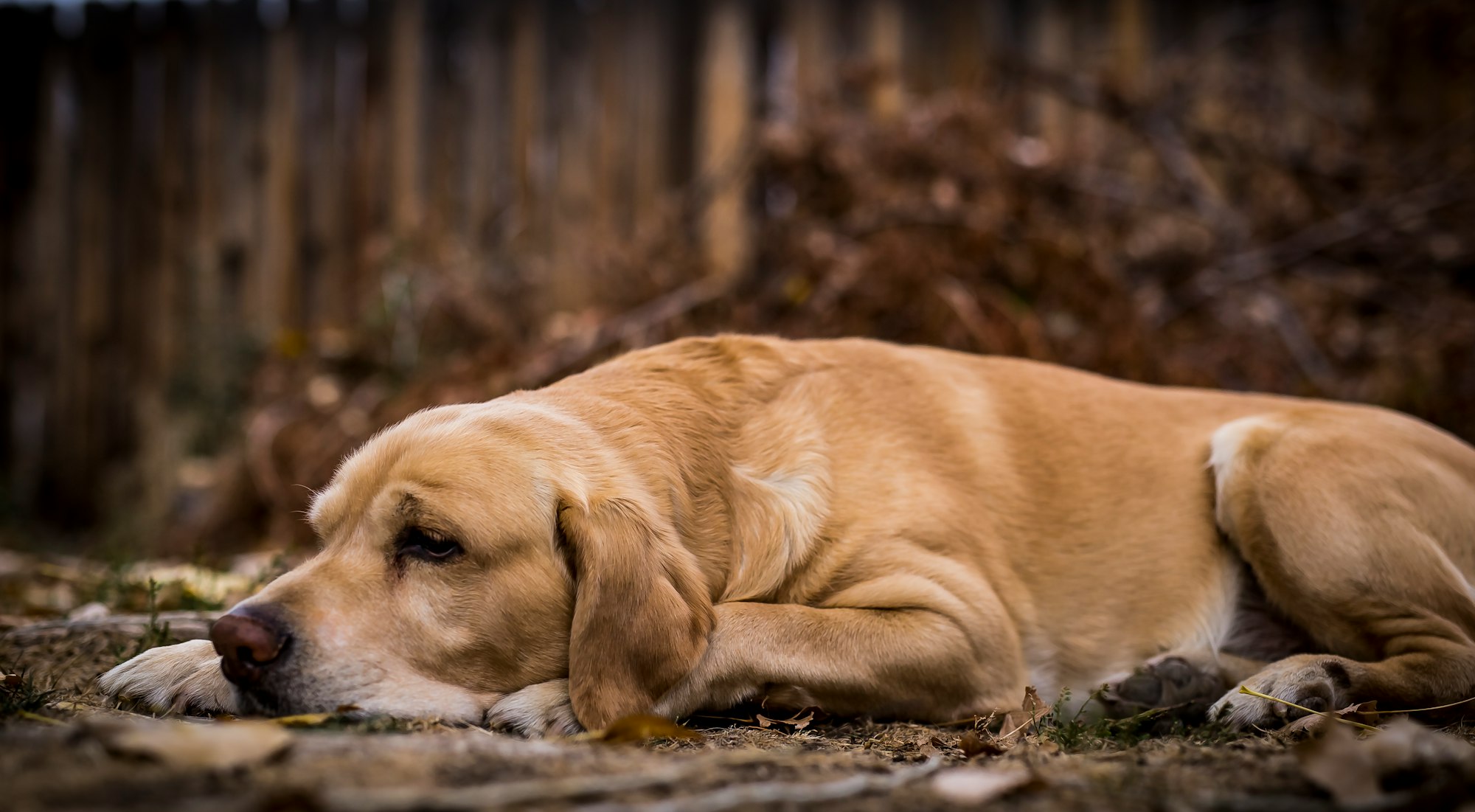
Frequently Asked Questions
What are some common dog and puppy sleeping habits?
Dogs and puppies can sleep in a variety of positions, including lying on their back with their limbs tucked in, sleeping on their side with their legs extended, or curled up in a ball with their paws tucked under. These positions can indicate their comfort, level of relaxation, and sense of security.
Why do some dogs prefer to sleep on cool tile or surfaces?
Dogs may seek out cool tile or surfaces to sleep on, especially on hot days, in order to regulate their body temperature and stay cool. The coolness of the tile or surface helps to dissipate their internal body heat, keeping them comfortable while they sleep.
Can a dog's sleeping position indicate their emotional state?
Yes, a dog's sleeping position can provide insight into their emotional state. For example, a dog sleeping in the lion pose, with their head propped up on their paws, may indicate alertness, loyalty, and possible separation anxiety. Understanding their sleeping position can help pet parents better understand their dog's emotions.
How can I enhance my dog's comfort while they sleep?
Providing appropriate bedding, such as orthopedic support or cooling pads, can enhance the comfort of dogs in different sleeping positions. Orthopedic support can help relieve pressure on the spine, while cooling pads can keep them cool on hot days. It's important to consider your dog's specific needs and preferences when choosing bedding.
When should I seek professional veterinary help regarding my dog's sleeping habits?
If your dog is unable to get comfortable, constantly changes sleeping positions due to discomfort or pain, or experiences any significant changes in their sleeping habits, it is recommended to consult a veterinarian. They can help determine if there are any underlying health issues causing discomfort or if further evaluation is necessary.
What does it mean if my dog's paws twitch or they "sleep run" during their sleep?
Dreamy paw twitches and "sleep running" are common behaviors observed during a dog's sleep. These movements are usually a normal part of the sleep cycle and do not indicate a serious issue. It is believed that dogs may be reenacting dreams or engaging in playful antics during these moments.
More articles on dogs and sleep:
